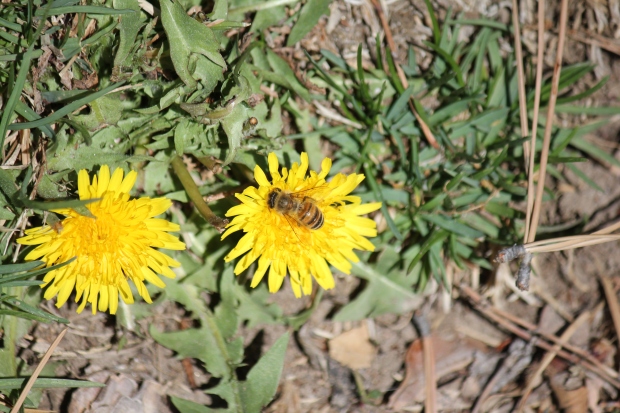Peponapis: A Squash Lovin’ Bee
by Jessica Goldstrohm
Did you know some bees are very dependent on particular species of flowers?
This lovely bee is the squash bee, and I was fortunate enough to discover her, along with may others nestled inside squash flowers of a good friend’s garden! This was a very healthy and thriving collection of squash bees, and they are very specific to squash plant reproduction.
Squash bees are quite predictable in the flower preference they have; squash flowers, any type of squash flower, but it must be a squash flower. They fly very early in the morning, sometimes before dawn seeking the opening squash flowers. The females will spend much of the morning nestled inside squash flowers, circling the stamen of the flower, collecting nectar and pollen for their nests. In fact, you will often find groups of squash bees within each squash bloom, absent of any conflict among them.

My photos too!
Squash bees are solitary nesters, meaning they work independently to build her nest, lay eggs, and collect all resources for the eggs they lay. However, they may nest in aggregations of hundreds, kind of like apartment buildings are to humans. We live next to each other, but we all lead separate lives.
Squash bees prefer to nest VERY close to their favorite flowering plants, so you will most often find their nesting holes in the ground under squash plants. Females will retreat to he nest come rundown, while males find a nice squash flower to sleep in until morning.
This activity continues throughout the summer, and partway into fall, then all the existing bees die, leaving behind the next season’s generation nestled all in a row of egg cells containing adult bees. This new generation of bees will hibernate until the following spring or early summer when the squash plants are flowering. Squash bees are so particular about the flowers they feed on, that their lifecycle revolves around squash plants!
I’m sure you may have already arrived at the question of what does that mean for them when we go to clear the dead squash plants at the end of the season? Well, too much deep tilling can lead to complete destruction of a mother bee’s hard work. Squash bees nest approximately 1.5 feet straight down into the ground, so only rigorous tilling harms nests. Leaving some of the plant behind can serve as insulation to the hibernating bees through the winter.
Next time you see a squash plant, take a peek inside to see a group of squash bees, and look under the squash plant for any holes in the ground that might be a squash bee’s nest.
There you have it! Another native bee we depend on to get resources we all enjoy in the fall! I can’t wait to have some zucchini from my plants, and pumpkin too! So many things occurring right beneath our noses, and we miss them when we don’t stop and observe.
Cheers to joining the movement to save our bees!









